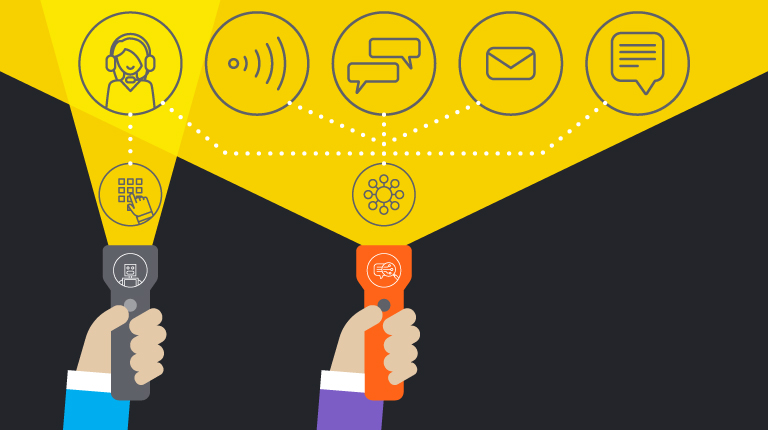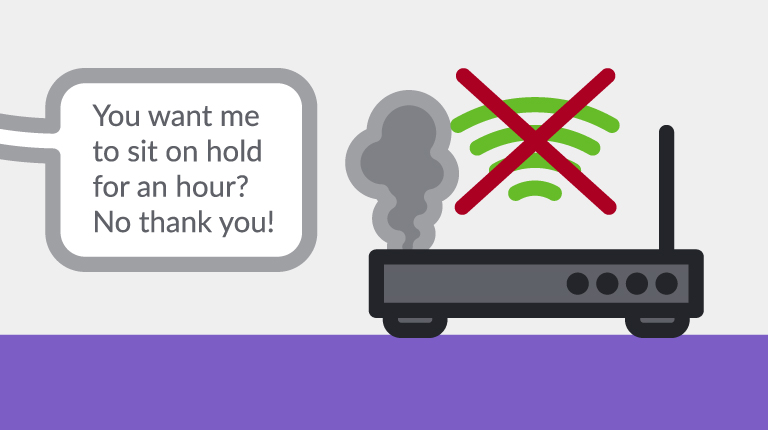The best and most consumer friendly Interactive Voice Response (IVR) systems save callers time by easily answering the questions most frequently asked, and by connecting callers with the best available agent for more complex inquiries. The problem is, most IVRs simply don’t do this well.
Consumers call the companies with whom they do business to get something done. These companies implement IVR systems to route callers to the right place quickly, and to speed up the whole process, including actually handling the work where possible. There’s nothing inherently wrong about enabling your customers to help themselves, on-demand, over the phone. We’ve all embraced self-service in other areas of our life, with few complaints: consider ATMs and online banking, self-checkout lines at the grocery store, even refueling our cars. When done well, there’s nothing objectionable about online and over the phone services that enable customers to help themselves. However, when done poorly, there’s plenty wrong with it.
Too often in this numbers-driven industry, we focus solely on containment of callers within self-service. The underlying goal of containment in an IVR is a reduction in call-center costs. Achieving a high level of containment has been a primary goal of call centers across industries for many years. However, focusing solely on containment, and all but ignoring the obvious objective of making your company easy and pleasurable to do business with — that is, delivering a great service experience — has caused a backlash from consumers. We construct multiple hurdles, and nearly trap callers in an attempt to contain them in the IVR. And, in the end it backfires, as consumers inevitably find ways around the IVR. Their first reaction is to zero out. And, when that doesn’t work, they resort to resources such as get2human.com to discover ways to get past more elaborate and annoying IVR hurdles.
Measuring the success of voice applications has traditionally focused on containment, but this measure alone is short-sighted. Both businesses and consumers would be better served if companies switched their focus from containment to resolution and customer satisfaction through ease of use.
Step 1: Focus on productivity
Innately, the word containment is a horrific word to describe how a customer inquiry has been handled. To explain the concept of containment to an outsider, it basically translates to: we blocked X percentage of calls from talking to our expensive customer service representatives. That includes a certain portion of calls that current IVRs are able to resolve, but often additionally include caller hang-ups, dropped callers, or people who were redirected down an incorrect path. There’s no concept of issue resolution – containment does not infer that the inquiry was handled correctly.
At Interactions, when we map a customer journey, issues are resolved, not contained. While an inquiry resolved in self-service does translate to a contained contact, a contained contact does not always translate to a resolved inquiry depending on how the business tracks the metric. We often meet with enterprises that consider abandoned calls as contained. Abandoned, as in, hung up because they got stuck in your IVR, were too busy to wait on hold, or any variety of reasons why they didn’t complete a self-service inquiry. As far as finance is concerned, a high containment rate is good, so in turn, increasing your abandonment rate will make your metrics appear more cost-effective.
However, this is counterproductive to solutions that work to improve routing and self-service and the associated metrics. If you’re able to front-end your callers with a more engaging message with a system that can understand callers’ intents more effectively, in turn your abandonment rate will decrease. And if you had a very high abandonment rate before making improvements, the drop in your abandons may outweigh the containment improvements that a better system will provide. Therefore, if you’re including abandons in your containment rate, when you improve routing, there’s a distinct possibility that your ‘containment’ rate may drop. That makes the effective progress you’ve driven in the contact center look detrimental in the eyes of the Finance department.
For those enterprises that do include abandoned calls in their containment rate, improvements to self-service and routing will have to be offset in other areas. While containment may decrease, you should see repeat calls go down due to less abandonment as well as an improved First Call Resolution rate. Often, the value of a decrease in repeat callers and increased first call resolution will be viewed as secondary metrics in the eyes of finance, so the improvements that have been made will look much less beneficial than in actuality.
When we adjust our thinking from containment to issue resolution, we benefit both the customer and ourselves. Separating abandonment rate and containment rate allows our improvements to be viewed beneficially – we begin really tracking the issues that we resolve. As we get better, our containment rate will definitively increase, while our abandonment will drop, and in turn we’ll see a boost in CSAT, FCR, and a drop in Repeat Calls.
Step 2: Focus on quality
To be clear, resolving customers’ inquiries is a worthy goal, and one that the customer will embrace when it’s done in a way that is easy, fast, and pleasing. Therefore, “resolution” and “experience” are both key measures, and both deserve focus. With that said, we believe that determining the business value of self-service resolution is well understood, therefore we will focus on assessing and valuing the customer experience related to the IVR for the remainder of this article.
There are many ways to gauge the satisfaction of your customers. Net Promoter Score is a powerful method for measuring overall customer satisfaction, at the highest and ultimate level. As such, NPS has gained enormous support and popularity. J.D. Power rankings and awards related to customer service are highly respected and coveted. J.D. Power covers multiple service areas and delivers a comparative assessment of organizations within industries, and their offerings across multiple dimensions. While both offer valuable insight into customer satisfaction at the highest levels, by themselves they’re not suitable for assessing the impact of your IVR on the customer experience or overall satisfaction.
To assess the experience of your IVR, and its contribution to overall satisfaction, you’ll need a metric that is better suited, and an approach that is specifically designed, for measuring IVR success. We suggest Customer Effort Score (CES), a metric that measures a customer’s perception of the amount of effort they had to put forth to get done, what they called to get done. CES is based on a single survey question that asks, “How much effort did you personally have to put forth to handle your request?” Research shows that CES is better suited to assess an individual service interaction and predictor of future behavior than broader measures. We believe that through careful design, your survey can assess both the quality of the interaction, and correlate the interaction to your broader measures of overall customer satisfaction such as NPS. For the approach, we suggest a method that:
- Provides for a randomized sample, rather than a self-selected sample.
- Allows for clear isolation of the IVR experience from the overall service experience and levels of satisfaction.
- Administers the survey shortly after the original service interaction (minutes, rather than hours or days).
- Allows for cross-referencing to call recordings and other call related data (e.g., CRM).
- Permits correlation to broader customer satisfaction ratings.
In conclusion, we believe that success is more completely measured and holistically improved when we focus on productivity and quality. Metrics and methods are available that allow us to measure levels of success across both dimensions. But in the final analysis, it’s the action we take to improve satisfaction and performance, based on the insights uncovered by the data, that drives customer success.




